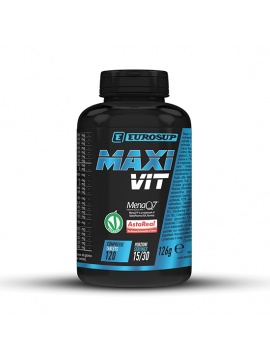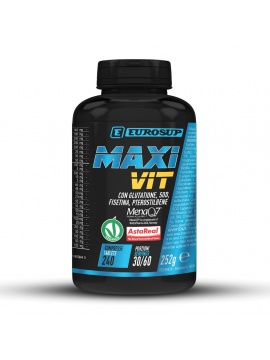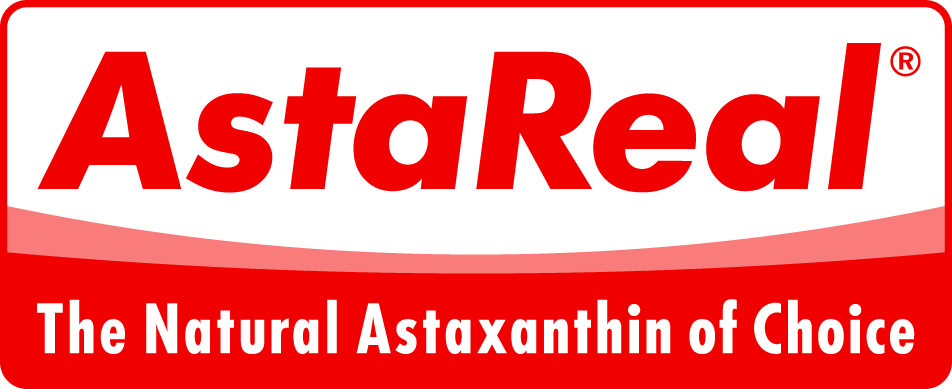

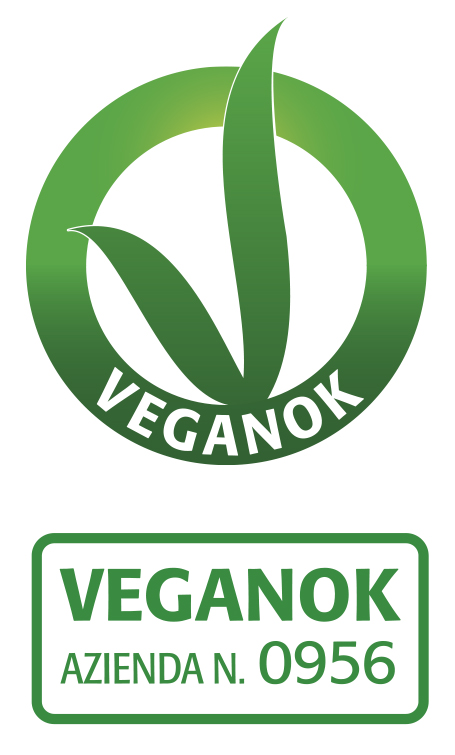
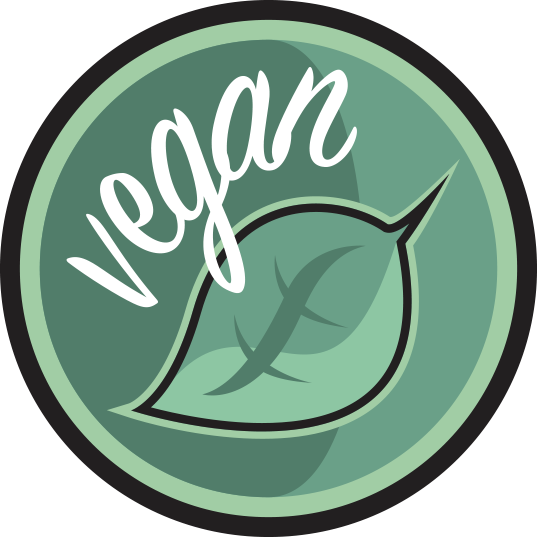
- Healthy food supplement, multivitamin and multimineral with anti-aging properties
- Advanced formula with 47 nutrients
- Always updated in dosages and composition
- Vegan product certified VeganOK.
- With GLUTATHIONE, SOD, FISETIN, PTEROSTILBENE
MAXI VIT is a high-dose multivitamin and multimineral health food supplement, complete with essential nutrients, antioxidants, plant extracts, components with anti-aging properties. Its advanced formula, now with 47 nutrients, is constantly updated in dosages and composition, to always guarantee maximum effectiveness. MAXI VIT is made without components of animal origin and is certified VeganOK.
The nutrients contained in MAXI VIT perform the following physiological functions:
Fisetin from Scotano: the Scotano (Cotinus coggygria Scop.), better known as the “Tree of the fog”, is a plant historically known in south-eastern Europe for its coloring and medicinal properties. The leaves and woody parts of the plant contain a wide spectrum of polyphenolic secondary metabolites, such as tannins, various subtypes of flavonoids and phenolic acids. In the bark of the Scotano we find fisetin, a natural flavonol particularly studied in recent research for its senolytic action (selective elimination of senescent cells)
Reduced glutathione: Glutathione, also called γ-L-glutamyl-L-cysteinyl-glycine is a biological tripeptide and represents one of the most powerful natural antioxidants present in our body. It plays a fundamental role in cellular defense against metabolic, oxidative and metallic stress by presiding over “detoxification” reactions (with which toxins are eliminated, both those produced by our body and those coming from outside), in tissue repair, also supporting the immune system. Physiologically, the production of glutathione decreases with age, with an average rate of 10% every decade of life after the age of 20. However, this reduction takes on clinical importance in the general population after the age of 40.
SOD: Superoxide dismutase (SOD) is an enzyme that plays a crucial role in protecting cells from the damaging effects of free radicals and so-called “oxidative stress”. Free radicals are unstable and highly reactive molecules that form as a natural product of cellular metabolism. Superoxide, in particular, is a type of highly reactive free radical that can cause damage to cells, including lipids, proteins and nucleic acids. This is where SOD comes in, which is found in the cells of all aerobic organisms, including humans. Its main function is to neutralize superoxide, converting it into less reactive molecules.
Pterostilbene: Pterostilbene is a phenolic compound, naturally present in many plants. Pterostilbene is a valuable substance for its anti-inflammatory action and protection from free radical damage, which affects physical and mental aging.
Milk Thistle fruit: Digestive function. Liver function. Purifying functions of the body. Antioxidant. Carbohydrate metabolism.
Pomegranate fruit: Antioxidant.
Goji (Lycium barbarum L.) fruit: Antioxidant
Polygonum cuspidatum root: Antioxidant. Fluidity of bronchial secretions. Purifying functions of the body. Drainage of body fluids. Regular functionality of the cardiovascular system. Tonic. (physical, mental tiredness).
Bilberry fruit: Functionality of the microcirculation (heavy legs). Antioxidant. Vision well-being. Regularity of intestinal transit.
Olive leaves: Carbohydrate and lipid metabolism. Normal blood circulation. Regularity of blood pressure. Antioxidant.
Tomato: fruit: Antioxidant.
Hematococcus pluvialis thallus: Antioxidant.
Grape seeds: Antioxidant. Regular functionality of the cardiovascular system.
Acerola: Natural defenses of the body, support and restorative action, Antioxidant.
Broccoli: Antioxidant. Regular functionality of the cardiovascular system. Digestive function. Joint function.
Para-aminobenzoic acid (PABA) is a natural water-soluble cofactor of B vitamins. It plays an important role in maintaining healthy skin and hair pigmentation.
Betaine is a donor of methyl groups and contributes to the re-synthesis of S-adenosyl-methionine (SAME).
Taurine promotes physical and mental functions.
Lipoic acid is active in both lipophilic and hydrophilic environments, has an antioxidant action by attacking ROS, preventing lipid peroxidation and replenishing and regenerating other antioxidants such as vitamin C, vitamin E, glutathione, ubiquinol. It has a neuroprotective action and a control action on gycemia.
Choline contributes to normal lipid and homocysteine metabolism and to the maintenance of normal liver function. Choline is an essential component of acetylcholine, an important neurotransmitter.
Inositol is a basic component of lecithin, useful for the use of fats and cholesterol in the body. Inositol counteracts the oxidation and accumulation of fats in the liver.
CoQ10 is a molecule that intervenes in the transport of electrons at the mitochondrial level in oxidative phosphorylation, a ubiquitous biochemical process for the production of ATP. It plays an essential role in the functioning of mitochondria, the intracellular organelles that act as precious energy centers of our cells. Coenzyme Q10 is a powerful antioxidant, protects cell membranes from oxidative damage, helps strengthen the immune system, promotes physiological cardiac function and its protection. With age, the concentration of coenzyme Q10 decreases, even in athletes, causing a decrease in both energy efficiency and antioxidant action, thus promoting the aging process. Quercetin, or quercetin if you prefer, is a ubiquitous flavonoid present in a large variety of fruits (apples, grapes, olives, citrus fruits, berries), vegetables (tomatoes, onions, broccoli, capers). It promotes antioxidant activity by helping to counteract the action of free radicals. Quercetin helps to counteract the negative activity of solar radiation. In fact, these lead to the synthesis of reactions by oxygen that form free radicals, which have the ability to alter the structure of collagen and elastin synthesis by dermal fibroblasts. The direct and indirect antioxidant action protects the activity of endogenous antioxidant enzyme systems: catalase, superoxide dismutase, glutathione peroxidase and glutathione reductase. It also counteracts inflammatory processes.
Rutin is a natural substance, a flavonoid glycoside present in plants belonging to various families, especially that of Rutaceae. It regulates the permeability of blood capillaries and increases their resistance and has antioxidant activity.
Lutein is a substance of natural origin, known for its antioxidant and protective properties on vision. It belongs to the group of xanthophylls, natural fat-soluble pigments contained in many foods. Lutein (together with zeaxanthin) is the only carotenoid that is deposited in large quantities in the macular portion of the eye, it is no coincidence that its fame in the ophthalmology field is well known as a true natural substance that protects the well-being of the eyes. Together with zeaxanthin, it forms the pigment present in the area of the retina where the observed image is formed.
Zeaxanthin is a carotenoid pigment that is created in algae and other plants by hydroxylation of β-carotene, with high antioxidant activity. It is found in high concentrations in the macula of the eye.
Astaxanthin is a carotene extracted from the alga Haematococcus pluvialis. It is therefore a lipophilic element, or a thermostable active ingredient that spreads effectively especially in tissues with a high fat concentration: adipose tissue, central nervous system, integumentary system (skin), lungs, etc. Astaxanthin is the most powerful antioxidant known "to date"; it is in fact known that its effects of protection from free radicals are 550 times more powerful than tocopherol (vitamin E).
Lycopene is a natural substance present in some plant-based foods such as tomatoes, belonging to the carotenoid group. It has strong antioxidant properties and can promote prostate health.
Vitamins B12, B6, folate, pantothenic acid, contribute to the reduction of tiredness and fatigue.
Riboflavin, thiamine, biotin, contribute to normal energy metabolism
Vitamins B12, B6, folate, contribute to normal homocysteine metabolism.
Vitamins B12, B6, thiamine, folate, biotin contribute to normal psychological function.
Vitamins B12, B6 contribute to normal red blood cell formation.
Vitamins B12, B6, folate contribute to the normal function of the immune system.
Vitamins B6, thiamine, riboflavin, biotin contribute to the normal functioning of the nervous system.
Riboflavin and biotin contribute to the maintenance of normal skin.
Riboflavin contributes to the maintenance of normal vision.
Riboflavin contributes to normal iron metabolism and the protection of cells from oxidative stress.
Vitamin B6 contributes to normal cysteine synthesis.
Vitamin B6 and folate contribute to normal homocysteine metabolism.
Vitamin B6 contributes to normal protein and glycogen metabolism.
Vitamin B6 contributes to the regulation of hormonal activity. Thiamine contributes to normal cardiac function. Folate contributes to the growth of maternal tissue during pregnancy, to normal haematopoiesis (the process of producing blood cells) and to normal amino acid synthesis. Vitamin B12 and folate intervene in the process of cell division. Biotin contributes to normal macronutrient metabolism, to the maintenance of normal hair, to the maintenance of normal skin. Riboflavin and biotin contribute to the maintenance of normal mucous membranes. Pantothenic acid contributes to normal mental performance. Vitamin D intervenes in the process of cell division and contributes to normal absorption/utilisation of calcium and phosphorus, to normal blood calcium levels, to the maintenance of normal bones, to the maintenance of normal muscle function, to the maintenance of normal teeth, to the normal function of the immune system. Vitamin A contributes to normal iron metabolism, to the maintenance of normal mucous membranes, to the maintenance of normal skin, to the maintenance of normal vision, to the normal function of the immune system and intervenes in the process of cell specialization. Vitamin C increases the absorption of iron. Vitamin C contributes to normal energy metabolism, to the protection of cells from oxidative stress, to the normal functioning of the nervous system, to normal psychological function, to the normal function of the immune system, to the protection of cells from oxidative stress, to the reduction of tiredness and fatigue. Vitamin C contributes to normal collagen formation for the normal function of blood vessels, for the normal function of bones, for the normal function of cartilage, for the normal function of gums, for the normal function of skin, for the normal function of teeth. Vitamin K contributes to normal blood clotting and to the maintenance of normal bones. Selenium contributes to the maintenance of normal hair, to the maintenance of normal nails, to the normal function of the immune system, to normal thyroid function, to the protection of cells from oxidative stress. Zinc contributes to normal acid-base metabolism, normal carbohydrate metabolism, normal cognitive function, normal DNA synthesis, normal macronutrient metabolism, normal fatty acid metabolism, normal vitamin A metabolism, normal protein synthesis, maintenance of normal bones, maintenance of normal hair, maintenance of normal nails, maintenance of normal skin, maintenance of normal vision, normal function of the immune system, protection of cells from oxidative stress. Copper contributes to the maintenance of normal connective tissues, normal energy-yielding metabolism, normal functioning of the nervous system, normal hair pigmentation, normal iron transport in the body, normal skin pigmentation, normal function of the immune system, protection of cells from oxidative stress. Calcium contributes to normal blood clotting, normal energy-yielding metabolism, normal muscle function, normal neurotransmission, normal function of digestive enzymes. Calcium intervenes in the process of cell division and specialization. Calcium is necessary for the maintenance of normal bones and normal teeth. Phosphorus contributes to normal energy-yielding metabolism and the normal function of cell membranes. Phosphorus contributes to the maintenance of normal bones and normal teeth. Chromium contributes to the maintenance of normal blood glucose levels and normal macronutrient metabolism. Manganese contributes to normal energy-yielding metabolism, the maintenance of normal bones, the normal formation of connective tissues and the protection of cells from oxidative stress. Iodine contributes to normal cognitive function, normal energy-yielding metabolism, the normal functioning of the nervous system, the maintenance of normal skin, the normal production of thyroid hormones and normal thyroid function. Magnesium contributes to the reduction of tiredness and fatigue, electrolyte balance, normal energy-yielding metabolism, the normal functioning of the nervous system, normal muscle function, normal protein synthesis, normal psychological function, the maintenance of normal bones, the maintenance of normal teeth. Magnesium and zinc intervene in the process of cell division.
with AstaReal® astaxanthin
MenaQ7® is a trademark of NattoPharma ASA, Norway
Advanced formula with 47 nutrients
Always updated in dosages and composition
Vegan product certified VeganOK.
With GLUTATHIONE, SOD, FISETIN, PTEROSTILBENE
Specifications
|
Stabilizer: cellulose microcrystalline; Dibasic calcium phosphate; L-ascorbic acid (vit C.); Magnesium oxide; Choline bitartrate; Acerola d.e. 25% vitamin C (Malpighia glabra L., fruit); LUTEPURE (Calendula officinalis L., capitula) e.s. 5% lutein e 1% zeaxanthin; Taurine; Inositol; Anti-caking agent: magnesium salts of fatty acids (vegetable source), silicon dioxide; Para-aminobenzoic acid (PABA); Dl-alpha-tocopheryl acetate (Vit. E); Betaine; Blueberry (Vaccinium myrtillus L., fruit) d.e. 20% pterostylbene; Tomato (Solanum Lycopersicum L., fruit) d.e. 5% lycopene; Goji (Lycium barbarum L., fruits) d.e. 40% polysaccharides; Pomegranate (Punica granatum L., fruit) d.e. 40% ellagic acid; Zinc gluconate; Niacine (Nicotinamide) (vit. PP); ASTAREAL® astaxanthin derived from the algae Haematococcus pluvialis; Grapes (Vitis vinifera L., seeds) d.e. 95% procyanidins; milk thistle (Silybum marianum Gaertn., frutto) d.e. 80% silymarin; Cotinus (Cotinus coggygria Scop, corteccia) d.e. 20% fisetin; Broccoli (Brassica oleracea L., leaves, inflorescence) d.e. 0,3% sulforaphane; Quercetin; Rutin; Olive (Olea europaea L. leaves) d.e. 6% oleuropein; Polygonum cuspidatum Siebold & Zucc., root, d.e 98% resveratrol; Selenium yeast; Reduced L-Glutathione; SOD Superoxy dismutase from carrot (Daucus carota sativa, root); Thiamine hydrochloride (vit. B1); Riboflavin (vit. B2); D-calcium pantothenate; Coenzyme Q10; Boric acid; Pyridoxine hydrochloride (vit. B6); Cholecalciferol (vit. D3) (vegetable source); Manganese gluconate; Retinyl acetate (vit. A); Copper gluconate; Cyanocobalamin (vit. B12); Vitamin K2 (menaqinone-7) (MenaQ7®); Chromium picolinate; D-biotin; pteroil-monoglutamic acid (folic acid); Potassium iodide. |
|||||||||||||||||||||||||||||||||||||||||||||||||||||||||||||||||||||||||||||||||||||||||||||||||||||||||||||||||||||||||||||||||||||||||||||||||||||||||||||||||||||||||||||||||||||||||||||||||||||||||||||||||||||||||||||||||||||||||
|
The product does not replace a varied diet. A varied and balanced diet and a healthy lifestyle are important. Do not exceed recommended dose. Keep out of reach of children under the age of three years. Store in a dry place away from heat sources. Carefully close the package after use. It should not be taken by infants and children under 10 years of age and if other food supplements containing astaxanthin esters are taken on the same day. |
|||||||||||||||||||||||||||||||||||||||||||||||||||||||||||||||||||||||||||||||||||||||||||||||||||||||||||||||||||||||||||||||||||||||||||||||||||||||||||||||||||||||||||||||||||||||||||||||||||||||||||||||||||||||||||||||||||||||||
NRV: nutrient reference value
NRV: nutrient reference value |
|||||||||||||||||||||||||||||||||||||||||||||||||||||||||||||||||||||||||||||||||||||||||||||||||||||||||||||||||||||||||||||||||||||||||||||||||||||||||||||||||||||||||||||||||||||||||||||||||||||||||||||||||||||||||||||||||||||||||
|
Swallow one serving = 4 tablets, or two servings = 8 tablets a day with water or other liquid of your choice, preferably distributed at the main meals (breakfast, lunch and dinner). |
|||||||||||||||||||||||||||||||||||||||||||||||||||||||||||||||||||||||||||||||||||||||||||||||||||||||||||||||||||||||||||||||||||||||||||||||||||||||||||||||||||||||||||||||||||||||||||||||||||||||||||||||||||||||||||||||||||||||||
| 8017054003040 | |||||||||||||||||||||||||||||||||||||||||||||||||||||||||||||||||||||||||||||||||||||||||||||||||||||||||||||||||||||||||||||||||||||||||||||||||||||||||||||||||||||||||||||||||||||||||||||||||||||||||||||||||||||||||||||||||||||||||




- Healthy food supplement, multivitamin and multimineral with anti-aging properties
- Advanced formula with 47 nutrients
- Always updated in dosages and composition
- Vegan product certified VeganOK.
- With GLUTATHIONE, SOD, FISETIN, PTEROSTILBENE
MAXI VIT is a high-dose multivitamin and multimineral health food supplement, complete with essential nutrients, antioxidants, plant extracts, components with anti-aging properties. Its advanced formula, now with 47 nutrients, is constantly updated in dosages and composition, to always guarantee maximum effectiveness. MAXI VIT is made without components of animal origin and is certified VeganOK.
The nutrients contained in MAXI VIT perform the following physiological functions:
Fisetin from Scotano: the Scotano (Cotinus coggygria Scop.), better known as the “Tree of the fog”, is a plant historically known in south-eastern Europe for its coloring and medicinal properties. The leaves and woody parts of the plant contain a wide spectrum of polyphenolic secondary metabolites, such as tannins, various subtypes of flavonoids and phenolic acids. In the bark of the Scotano we find fisetin, a natural flavonol particularly studied in recent research for its senolytic action (selective elimination of senescent cells)
Reduced glutathione: Glutathione, also called γ-L-glutamyl-L-cysteinyl-glycine is a biological tripeptide and represents one of the most powerful natural antioxidants present in our body. It plays a fundamental role in cellular defense against metabolic, oxidative and metallic stress by presiding over “detoxification” reactions (with which toxins are eliminated, both those produced by our body and those coming from outside), in tissue repair, also supporting the immune system. Physiologically, the production of glutathione decreases with age, with an average rate of 10% every decade of life after the age of 20. However, this reduction takes on clinical importance in the general population after the age of 40.
SOD: Superoxide dismutase (SOD) is an enzyme that plays a crucial role in protecting cells from the damaging effects of free radicals and so-called “oxidative stress”. Free radicals are unstable and highly reactive molecules that form as a natural product of cellular metabolism. Superoxide, in particular, is a type of highly reactive free radical that can cause damage to cells, including lipids, proteins and nucleic acids. This is where SOD comes in, which is found in the cells of all aerobic organisms, including humans. Its main function is to neutralize superoxide, converting it into less reactive molecules.
Pterostilbene: Pterostilbene is a phenolic compound, naturally present in many plants. Pterostilbene is a valuable substance for its anti-inflammatory action and protection from free radical damage, which affects physical and mental aging.
Milk Thistle fruit: Digestive function. Liver function. Purifying functions of the body. Antioxidant. Carbohydrate metabolism.
Pomegranate fruit: Antioxidant.
Goji (Lycium barbarum L.) fruit: Antioxidant
Polygonum cuspidatum root: Antioxidant. Fluidity of bronchial secretions. Purifying functions of the body. Drainage of body fluids. Regular functionality of the cardiovascular system. Tonic. (physical, mental tiredness).
Bilberry fruit: Functionality of the microcirculation (heavy legs). Antioxidant. Vision well-being. Regularity of intestinal transit.
Olive leaves: Carbohydrate and lipid metabolism. Normal blood circulation. Regularity of blood pressure. Antioxidant.
Tomato: fruit: Antioxidant.
Hematococcus pluvialis thallus: Antioxidant.
Grape seeds: Antioxidant. Regular functionality of the cardiovascular system.
Acerola: Natural defenses of the body, support and restorative action, Antioxidant.
Broccoli: Antioxidant. Regular functionality of the cardiovascular system. Digestive function. Joint function.
Para-aminobenzoic acid (PABA) is a natural water-soluble cofactor of B vitamins. It plays an important role in maintaining healthy skin and hair pigmentation.
Betaine is a donor of methyl groups and contributes to the re-synthesis of S-adenosyl-methionine (SAME).
Taurine promotes physical and mental functions.
Lipoic acid is active in both lipophilic and hydrophilic environments, has an antioxidant action by attacking ROS, preventing lipid peroxidation and replenishing and regenerating other antioxidants such as vitamin C, vitamin E, glutathione, ubiquinol. It has a neuroprotective action and a control action on gycemia.
Choline contributes to normal lipid and homocysteine metabolism and to the maintenance of normal liver function. Choline is an essential component of acetylcholine, an important neurotransmitter.
Inositol is a basic component of lecithin, useful for the use of fats and cholesterol in the body. Inositol counteracts the oxidation and accumulation of fats in the liver.
CoQ10 is a molecule that intervenes in the transport of electrons at the mitochondrial level in oxidative phosphorylation, a ubiquitous biochemical process for the production of ATP. It plays an essential role in the functioning of mitochondria, the intracellular organelles that act as precious energy centers of our cells. Coenzyme Q10 is a powerful antioxidant, protects cell membranes from oxidative damage, helps strengthen the immune system, promotes physiological cardiac function and its protection. With age, the concentration of coenzyme Q10 decreases, even in athletes, causing a decrease in both energy efficiency and antioxidant action, thus promoting the aging process. Quercetin, or quercetin if you prefer, is a ubiquitous flavonoid present in a large variety of fruits (apples, grapes, olives, citrus fruits, berries), vegetables (tomatoes, onions, broccoli, capers). It promotes antioxidant activity by helping to counteract the action of free radicals. Quercetin helps to counteract the negative activity of solar radiation. In fact, these lead to the synthesis of reactions by oxygen that form free radicals, which have the ability to alter the structure of collagen and elastin synthesis by dermal fibroblasts. The direct and indirect antioxidant action protects the activity of endogenous antioxidant enzyme systems: catalase, superoxide dismutase, glutathione peroxidase and glutathione reductase. It also counteracts inflammatory processes.
Rutin is a natural substance, a flavonoid glycoside present in plants belonging to various families, especially that of Rutaceae. It regulates the permeability of blood capillaries and increases their resistance and has antioxidant activity.
Lutein is a substance of natural origin, known for its antioxidant and protective properties on vision. It belongs to the group of xanthophylls, natural fat-soluble pigments contained in many foods. Lutein (together with zeaxanthin) is the only carotenoid that is deposited in large quantities in the macular portion of the eye, it is no coincidence that its fame in the ophthalmology field is well known as a true natural substance that protects the well-being of the eyes. Together with zeaxanthin, it forms the pigment present in the area of the retina where the observed image is formed.
Zeaxanthin is a carotenoid pigment that is created in algae and other plants by hydroxylation of β-carotene, with high antioxidant activity. It is found in high concentrations in the macula of the eye.
Astaxanthin is a carotene extracted from the alga Haematococcus pluvialis. It is therefore a lipophilic element, or a thermostable active ingredient that spreads effectively especially in tissues with a high fat concentration: adipose tissue, central nervous system, integumentary system (skin), lungs, etc. Astaxanthin is the most powerful antioxidant known "to date"; it is in fact known that its effects of protection from free radicals are 550 times more powerful than tocopherol (vitamin E).
Lycopene is a natural substance present in some plant-based foods such as tomatoes, belonging to the carotenoid group. It has strong antioxidant properties and can promote prostate health.
Vitamins B12, B6, folate, pantothenic acid, contribute to the reduction of tiredness and fatigue.
Riboflavin, thiamine, biotin, contribute to normal energy metabolism
Vitamins B12, B6, folate, contribute to normal homocysteine metabolism.
Vitamins B12, B6, thiamine, folate, biotin contribute to normal psychological function.
Vitamins B12, B6 contribute to normal red blood cell formation.
Vitamins B12, B6, folate contribute to the normal function of the immune system.
Vitamins B6, thiamine, riboflavin, biotin contribute to the normal functioning of the nervous system.
Riboflavin and biotin contribute to the maintenance of normal skin.
Riboflavin contributes to the maintenance of normal vision.
Riboflavin contributes to normal iron metabolism and the protection of cells from oxidative stress.
Vitamin B6 contributes to normal cysteine synthesis.
Vitamin B6 and folate contribute to normal homocysteine metabolism.
Vitamin B6 contributes to normal protein and glycogen metabolism.
Vitamin B6 contributes to the regulation of hormonal activity. Thiamine contributes to normal cardiac function. Folate contributes to the growth of maternal tissue during pregnancy, to normal haematopoiesis (the process of producing blood cells) and to normal amino acid synthesis. Vitamin B12 and folate intervene in the process of cell division. Biotin contributes to normal macronutrient metabolism, to the maintenance of normal hair, to the maintenance of normal skin. Riboflavin and biotin contribute to the maintenance of normal mucous membranes. Pantothenic acid contributes to normal mental performance. Vitamin D intervenes in the process of cell division and contributes to normal absorption/utilisation of calcium and phosphorus, to normal blood calcium levels, to the maintenance of normal bones, to the maintenance of normal muscle function, to the maintenance of normal teeth, to the normal function of the immune system. Vitamin A contributes to normal iron metabolism, to the maintenance of normal mucous membranes, to the maintenance of normal skin, to the maintenance of normal vision, to the normal function of the immune system and intervenes in the process of cell specialization. Vitamin C increases the absorption of iron. Vitamin C contributes to normal energy metabolism, to the protection of cells from oxidative stress, to the normal functioning of the nervous system, to normal psychological function, to the normal function of the immune system, to the protection of cells from oxidative stress, to the reduction of tiredness and fatigue. Vitamin C contributes to normal collagen formation for the normal function of blood vessels, for the normal function of bones, for the normal function of cartilage, for the normal function of gums, for the normal function of skin, for the normal function of teeth. Vitamin K contributes to normal blood clotting and to the maintenance of normal bones. Selenium contributes to the maintenance of normal hair, to the maintenance of normal nails, to the normal function of the immune system, to normal thyroid function, to the protection of cells from oxidative stress. Zinc contributes to normal acid-base metabolism, normal carbohydrate metabolism, normal cognitive function, normal DNA synthesis, normal macronutrient metabolism, normal fatty acid metabolism, normal vitamin A metabolism, normal protein synthesis, maintenance of normal bones, maintenance of normal hair, maintenance of normal nails, maintenance of normal skin, maintenance of normal vision, normal function of the immune system, protection of cells from oxidative stress. Copper contributes to the maintenance of normal connective tissues, normal energy-yielding metabolism, normal functioning of the nervous system, normal hair pigmentation, normal iron transport in the body, normal skin pigmentation, normal function of the immune system, protection of cells from oxidative stress. Calcium contributes to normal blood clotting, normal energy-yielding metabolism, normal muscle function, normal neurotransmission, normal function of digestive enzymes. Calcium intervenes in the process of cell division and specialization. Calcium is necessary for the maintenance of normal bones and normal teeth. Phosphorus contributes to normal energy-yielding metabolism and the normal function of cell membranes. Phosphorus contributes to the maintenance of normal bones and normal teeth. Chromium contributes to the maintenance of normal blood glucose levels and normal macronutrient metabolism. Manganese contributes to normal energy-yielding metabolism, the maintenance of normal bones, the normal formation of connective tissues and the protection of cells from oxidative stress. Iodine contributes to normal cognitive function, normal energy-yielding metabolism, the normal functioning of the nervous system, the maintenance of normal skin, the normal production of thyroid hormones and normal thyroid function. Magnesium contributes to the reduction of tiredness and fatigue, electrolyte balance, normal energy-yielding metabolism, the normal functioning of the nervous system, normal muscle function, normal protein synthesis, normal psychological function, the maintenance of normal bones, the maintenance of normal teeth. Magnesium and zinc intervene in the process of cell division.
with AstaReal® astaxanthin
MenaQ7® is a trademark of NattoPharma ASA, Norway
Advanced formula with 47 nutrients
Always updated in dosages and composition
Vegan product certified VeganOK.
With GLUTATHIONE, SOD, FISETIN, PTEROSTILBENE
Specifications
|
Stabilizer: cellulose microcrystalline; Dibasic calcium phosphate; L-ascorbic acid (vit C.); Magnesium oxide; Choline bitartrate; Acerola d.e. 25% vitamin C (Malpighia glabra L., fruit); LUTEPURE (Calendula officinalis L., capitula) e.s. 5% lutein e 1% zeaxanthin; Taurine; Inositol; Anti-caking agent: magnesium salts of fatty acids (vegetable source), silicon dioxide; Para-aminobenzoic acid (PABA); Dl-alpha-tocopheryl acetate (Vit. E); Betaine; Blueberry (Vaccinium myrtillus L., fruit) d.e. 20% pterostylbene; Tomato (Solanum Lycopersicum L., fruit) d.e. 5% lycopene; Goji (Lycium barbarum L., fruits) d.e. 40% polysaccharides; Pomegranate (Punica granatum L., fruit) d.e. 40% ellagic acid; Zinc gluconate; Niacine (Nicotinamide) (vit. PP); ASTAREAL® astaxanthin derived from the algae Haematococcus pluvialis; Grapes (Vitis vinifera L., seeds) d.e. 95% procyanidins; milk thistle (Silybum marianum Gaertn., frutto) d.e. 80% silymarin; Cotinus (Cotinus coggygria Scop, corteccia) d.e. 20% fisetin; Broccoli (Brassica oleracea L., leaves, inflorescence) d.e. 0,3% sulforaphane; Quercetin; Rutin; Olive (Olea europaea L. leaves) d.e. 6% oleuropein; Polygonum cuspidatum Siebold & Zucc., root, d.e 98% resveratrol; Selenium yeast; Reduced L-Glutathione; SOD Superoxy dismutase from carrot (Daucus carota sativa, root); Thiamine hydrochloride (vit. B1); Riboflavin (vit. B2); D-calcium pantothenate; Coenzyme Q10; Boric acid; Pyridoxine hydrochloride (vit. B6); Cholecalciferol (vit. D3) (vegetable source); Manganese gluconate; Retinyl acetate (vit. A); Copper gluconate; Cyanocobalamin (vit. B12); Vitamin K2 (menaqinone-7) (MenaQ7®); Chromium picolinate; D-biotin; pteroil-monoglutamic acid (folic acid); Potassium iodide. |
|||||||||||||||||||||||||||||||||||||||||||||||||||||||||||||||||||||||||||||||||||||||||||||||||||||||||||||||||||||||||||||||||||||||||||||||||||||||||||||||||||||||||||||||||||||||||||||||||||||||||||||||||||||||||||||||||||||||||
|
|
|||||||||||||||||||||||||||||||||||||||||||||||||||||||||||||||||||||||||||||||||||||||||||||||||||||||||||||||||||||||||||||||||||||||||||||||||||||||||||||||||||||||||||||||||||||||||||||||||||||||||||||||||||||||||||||||||||||||||
NRV: nutrient reference value
NRV: nutrient reference value |
|||||||||||||||||||||||||||||||||||||||||||||||||||||||||||||||||||||||||||||||||||||||||||||||||||||||||||||||||||||||||||||||||||||||||||||||||||||||||||||||||||||||||||||||||||||||||||||||||||||||||||||||||||||||||||||||||||||||||
|
Swallow one serving = 4 tablets, or two servings = 8 tablets a day with water or other liquid of your choice, preferably distributed at the main meals (breakfast, lunch and dinner). |
|||||||||||||||||||||||||||||||||||||||||||||||||||||||||||||||||||||||||||||||||||||||||||||||||||||||||||||||||||||||||||||||||||||||||||||||||||||||||||||||||||||||||||||||||||||||||||||||||||||||||||||||||||||||||||||||||||||||||
| 8017054005730 | |||||||||||||||||||||||||||||||||||||||||||||||||||||||||||||||||||||||||||||||||||||||||||||||||||||||||||||||||||||||||||||||||||||||||||||||||||||||||||||||||||||||||||||||||||||||||||||||||||||||||||||||||||||||||||||||||||||||||

